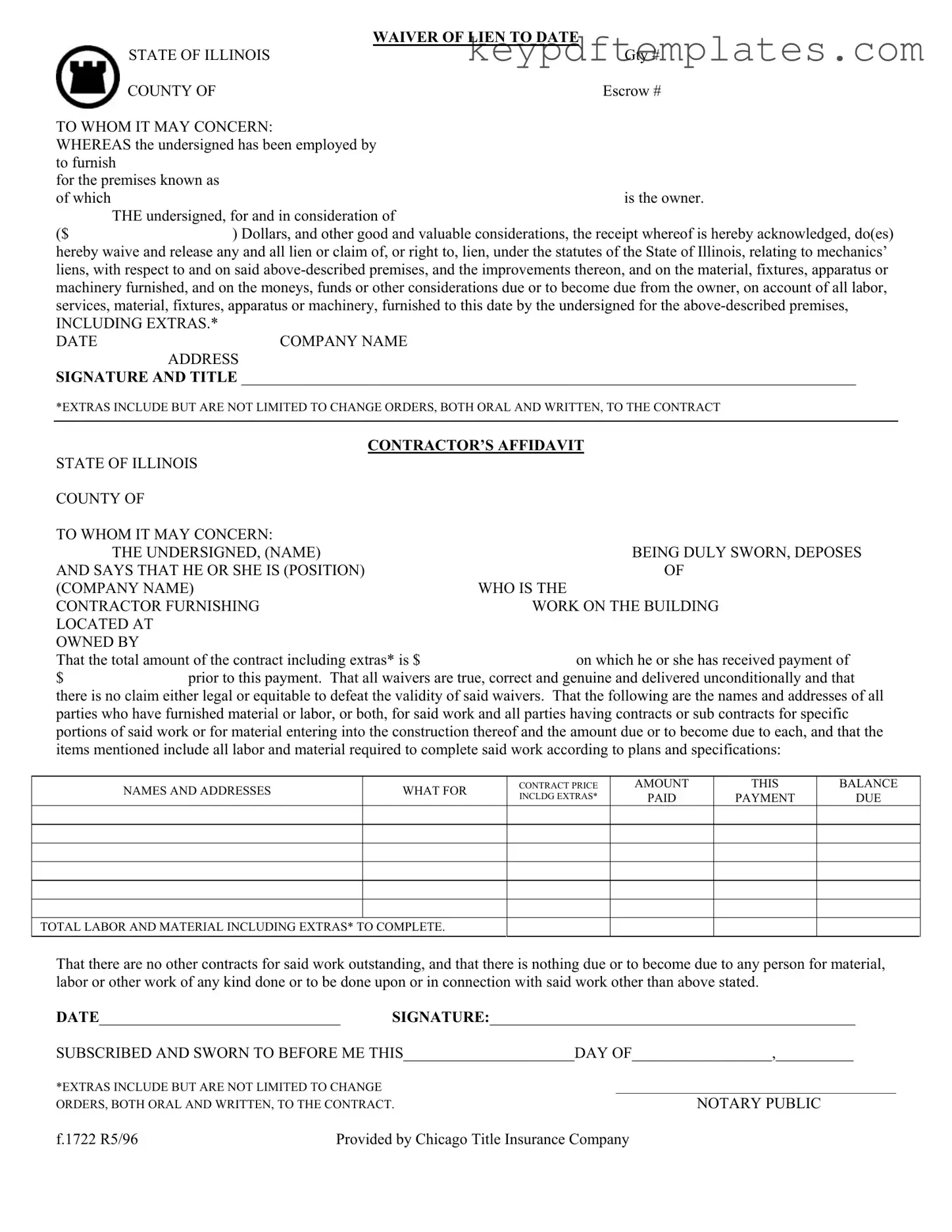Get Chicago Title Waiver Format Form
The Chicago Title Waiver Format form is a legal document used in Illinois to waive any lien rights associated with construction work performed on a property. This form serves as a declaration from contractors and subcontractors, confirming that they have received payment for their services and relinquishing any claims to lien against the property in question. By utilizing this form, parties involved can ensure a clear understanding of financial transactions and protect themselves from potential disputes.
Modify Document Online
